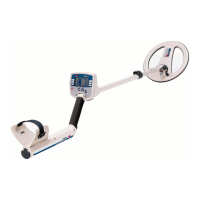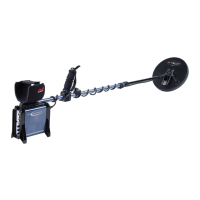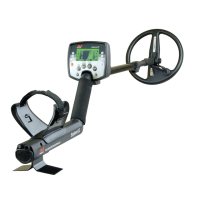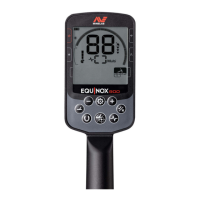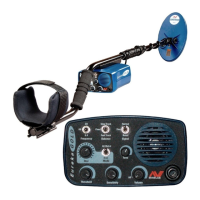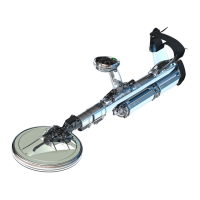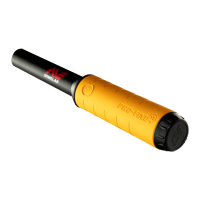Metal detectors create an electromagnetic
(EM) field around the coil, which penetrates
the ground. Because metal is conductive it
causes a change in this field. The detector
senses this change through the coil and
sends a signal back to the control box,
alerting the operator.
Metal detectors can determine the size, shape
and composition of metallic objects beneath
the coil. Typically, the larger the object, the
easier it is to detect.
A metal detector’s EM operating frequencies
are measured in kilohertz (kHz). Low
frequency EM fields (e.g. 1.5kHz) penetrate
the ground deeply, but sensitivity to smaller
targets is low. High frequency EM fields (e.g.
65kHz) have a shallower depth of penetration,
but sensitivity to small targets is high.
E-Trac’s multiple frequency operation provides
the advantage of both; good depth and
high sensitivity.
How Metal Detectors Work The Technology of E-Trac
Full Band Spectrum (FBS)
Most detectors on the market operate on a
single or dual frequency, ranging from 1 to 70
kilohertz (kHz).
Although this technology has served the
industry well for years, Minelab found that
a frequency that worked well in one area
would often offer only marginal performance
when used in another location. Ground
mineralisation, trash content and target size
all had an effect on how effectively a
detector transmitting a single frequency
would operate.
FBS technology combines Minelab’s
multiple frequency BBS (Broad Band
Spectrum) technology with a powerful new
microprocessor to give:
• Greaterdetectingdepth
• Highsensitivityoverawiderange
of targets
• Lessinterferencefromelectromagnetic
sources
• Moreaccurateidenticationoftarget
characteristics
The FBS circuit automatically transmits
multiple frequencies simultaneously. This
increased frequency range means that the
signal received from the detector coil is
analysed from a wide range of responses.
This allows E-Trac to analyse more target
information so that the target identification
(ID) is more accurate.
Minelab’s unique FBS technology means
deep, sensitive, accurate detecting.
Discrimination (Disc.)
Discrimination is the ability of a metal
detector to identify your desired targets (e.g.
coins and jewellery) and eliminate signals
from undesirable material (e.g. nails).
E-Trac can be programmed in a number
of ways to discriminate against unwanted
targets in different types of ground.
Ground Compensation
E-Trac uses a sophisticated approach to the
elimination of ground mineralisation. It uses
advanced digital filtering to eliminate the
influence of ground signals. This is achieved
automatically, allowing you to concentrate on
detecting targets.
Single Frequency
FBS Comparison
Dual Frequency
Multiple Frequency
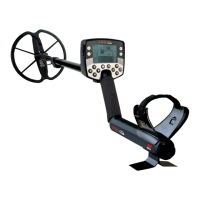
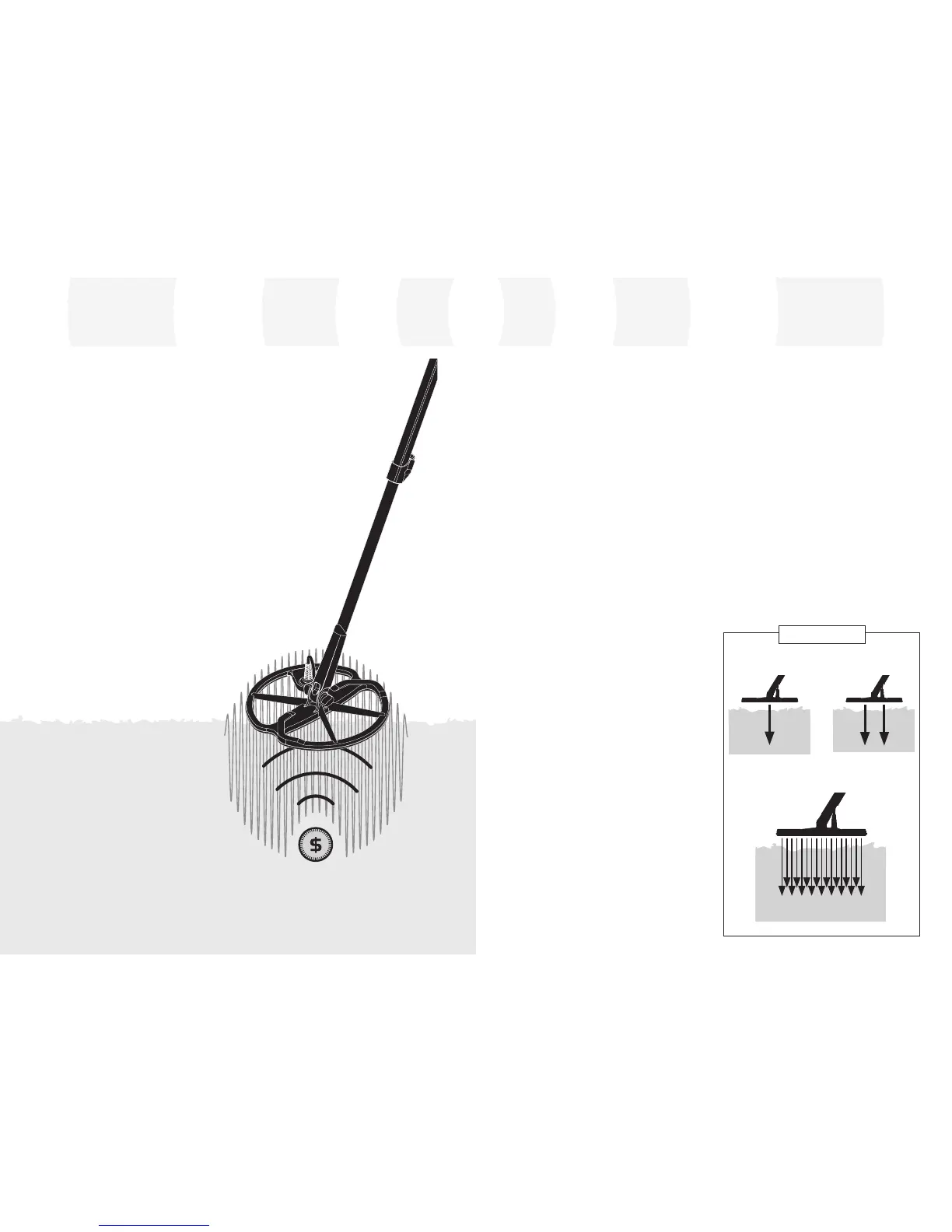